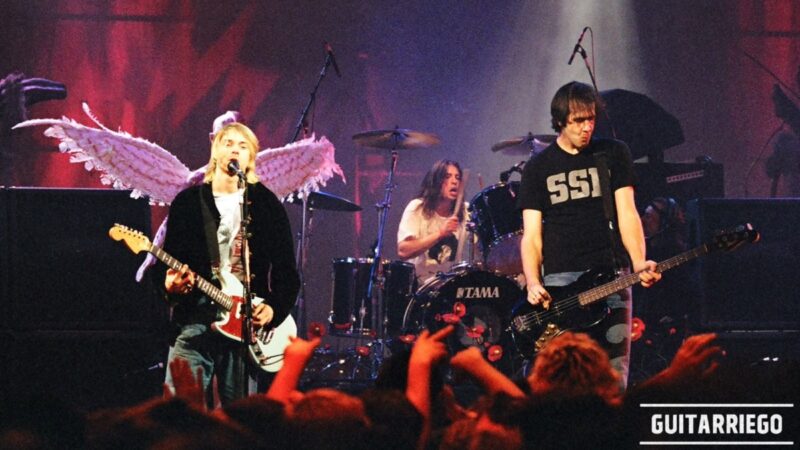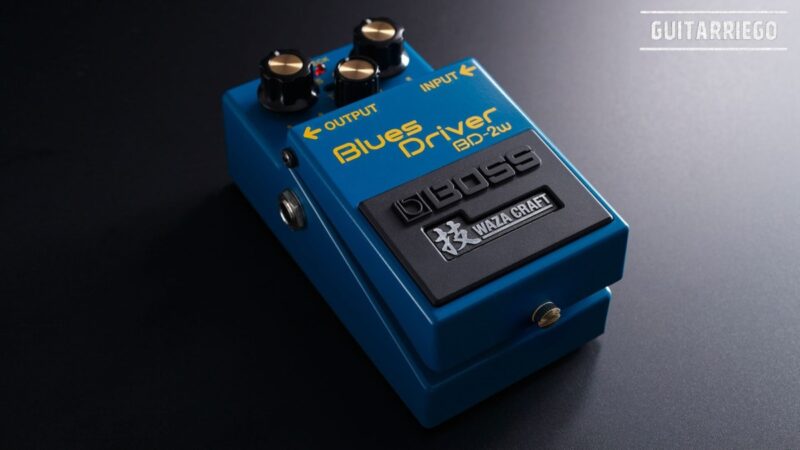Guitar equalizer pedal: Tips, tricks and all the ways to use it

Guitar Equalizer Pedal -Eq- is a fundamental and versatile pedal: tips, tricks and all the ways of use it.
Many times forgotten or ignored, the equalizer pedal will allow us more control over our audio by adjusting and modeling it in a precise and wide way.
What is a guitar equalizer pedal?
An electric guitar equalizer pedal is a device for correctly adjusting the equalizer, that is, the frequencies of the sound, it allows to amplify and attenuate the different frequencies such as low, low mid, medium, high and high medium or even more.
How to use a guitar Eq equalizer pedal?
It can be used in different ways and for different functions:
- It allows you to shape and adjust the audio by controlling frequencies.
- You can use it as a volume booster or overdrive, you can use it to have different audios and sounds with a single guitar.
- It serves to correct the acoustics of the environment when you play in new places, eliminating unwanted feedback.
What about the EQs on my guitar and amp?
Why use an electric guitar EQ pedal if you can EQ from the amp and the guitar? The EQ used by amps and guitars is passive, this means that it cuts frequencies but cannot add. Therefore, if you have an excess frequency, you can cut it to your liking. But in case it lacks some frequency you cannot add more to them. That’s where active EQs like the one on the stompbox come into play. These can add a certain frequency at the same time that they can also cut it.
Another advantage that electric guitar equalizer pedals have is that they handle a greater amplitude of frequencies and with greater precision and more focus. Amp EQs, usually two or three band, have limited range and less accurate. On the guitar’s EQ side, the tone is a high frequency “trimmer” or “attenuator”.
Finally, another option that they allow is to change their place in the audio chain, in that way they change the way of incidence in our tone, which allows you to achieve different things depending on where you put it.

The best equalizer pedals
The best equalizer pedals are those that offer more bands of frequency equalization (EQ) while having Level or volume and gain. These give greater versatility and functionality.
When it comes to pedal performance, functionality and features, the best EQ pedals for electric guitar are the MXR Ten Band Eq graphic equalizer pedal which features ten bands of frequencies, volume and gain and the Empress ParaEq parametric electric guitar EQ pedal. with boost.
Anyway, we always recommend that you try the products, be it an equalizer pedal or an electric guitar and form your own opinion, since there is always the subjective factor. Therefore, regardless of which electric guitar equalizer pedal they recommend, to be told which is the best equalization pedal, it is important that you also know what you are looking for and what you need to see which of them best meets your needs.
The cheapest equalizer pedals
Among the cheapest equalizer pedals you can find the Behringer Eq700 graphic equalizer pedal, the Joyo JF-11 and the Mooer Graphic G. In the case of the Behringer, it is a copy of the Boss GE-7, which has seven equalization bands and volume level. While the Joyo and the Mooer have only five bands of equalization. All of these equalizer pedals are very competitively priced and can be found at any online store or retailer.
If you can stretch your budget for the electric guitar equalizer pedal, we recommend going for the Boss GE-7 Equalizer Eq graphic guitar equalizer pedal which has a sturdy construction.
Types of equalizer pedals
There are two kinds of equalizer pedal, the parametric equalizer and the graphic equalizer.
In the parametric you choose the frequency, its amplitude and level. While the graph is the one that each frequency band has its own level of adjustment.
You can also classify them by benefits. There are equalizer pedals with five frequency bands up to ten bands. Some only have band handling and others add other controls or functions such as volume, gain and even booster.
The equalizer pedal is an electric guitar accessory that cannot be missing from your pedalboard if you are looking to have control of your tone and versatility of audios and sounds that you can get from your electric guitar.
Equalizer pedal uses and tricks
1) Tone adjustment and shaping with equalizer pedal
The main use of the equalizer pedal is to correct the tone and sound of your guitar, pedals or even your amplifier. For example, if you feel like your amp or guitar lacks “body” or lacks bass or mids you can add bass or mids to them. It can also happen that you want more brightness or presence, with the equalizer pedal you can easily correct it. You can even modify all the frequencies at the same time, and in the sense that you want.
It depends on where you place it in your sound chain, it will influence in different ways. your guitar to your liking when you place it in front of the pedal chain, that is to say immediately after the guitar. It also serves to shape the tone of your pedals such as an overdrive if you put it after one.
Examples of Adjustments and Tone Shaping:
Sometimes the Gibson Les Paul can be overwhelmed by its great richness of mids and lows, as well as round highs, especially when playing clean audios. You can achieve a more percussive, defined and dynamic sound, like a vintage Gibson Les Paul, by cutting mids – and if you want also bass – and adding treble. This will make it sound more Scooped, more similar to the audio from a Fender Telecaster.
Fender Stratocasters often have well scooped audio and wanting to add drive to your audio can sound a bit lacking in body. So what you can do is add means – and if you want or need, also serious. This will compensate for the lack of mids and / or bass and achieve an ideal sound for playing with a lot of saturation.

EQ Pedal Tone Shaping Tips:
– Pickups Simulator
There are electric guitar multi-effects stompboxes that feature pickup simulators. They do this by changing the equalization of the audio through equalizers, and changing the output level. This is exactly what EQ pedals that have a “Level” control can do.
For example, for the simulation of Singlecoils pickups -using Humbuckers or P90s-, what they do is cut the “Level”, Midrange and Bass and add Treble to it. This gives you Singles output and EQ.
On the other hand, the Humbucking pickup simulator – using Singlecoils – adds Bass and Mid, and increases the Output – “Level” -.
In this way, you can have two very different audios on the same guitar. Using a guitar with P90s pickups, you can switch to classic Singlecoil audio simply by activating the EQ pedal.
– Create environments with “rare” audios like “medieval guitar” or “Telephone Effect”
You can also use the equalizer pedal to achieve “crazy” audio, ideal for intros with the guitar alone, so that you give a “weird”, “clipped” electric guitar sound that requires a resolution, which you solve by turning the pedal off. the time the whole band comes in and generates a sort of “Explosion”.
The first is to recreate a “vintage” or “medieval guitar” type audio. This is done by lowering the mids to the minimum and raising the bass and treble to the maximum. You can add tons of reverb which will create a better ambience that will turn heads and will still sound clear and won’t clutter up given the mids cut.
The second is to recreate the “telephone” effect with the electric guitar, that medium, nasal audio. This is achieved by leaving the mid and mid / high frequencies at zero level and lowering all the rest of the frequencies, low, high and mid / low. Ideal for achieving muted, focused audio. When you turn off the pedal, it will make your guitar sound full, rich, and explosive.
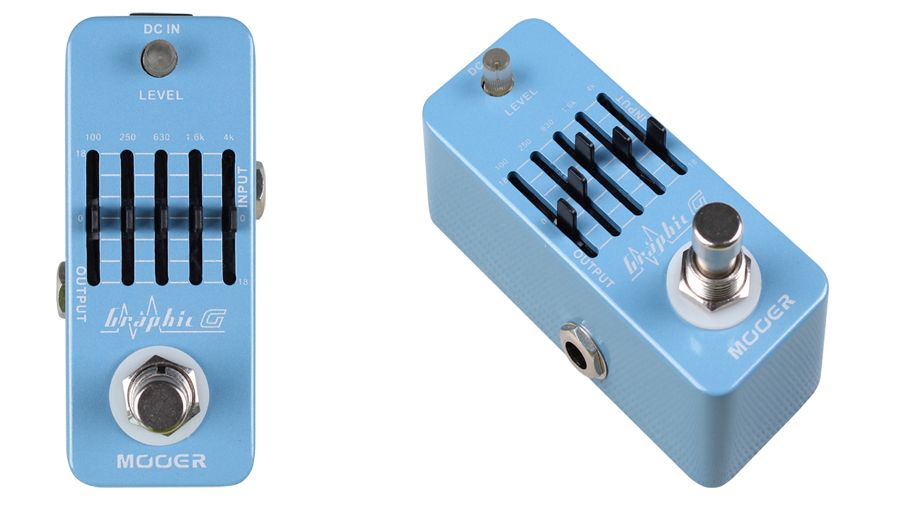
2) Booster or Overdrive with equalizer pedals
As we already said, most of the pedals or equalizers have “Level” or Volume level. This allows you to increase the output of the pedal without modifying the EQ of the signal. In this way, you can use it as a Booster.
At the same time that you can increase the volume you can increase the gain of the mid frequencies, as classic overdrives do like the Ibanez Tube Screamer or the Boss Superoverdrive SD-1. These Overdrives bring out the mids above the other frequencies which bring the guitar to the fore in the mix.
Tricks for using Booster or Overdrive
You may want your level and drive to remain stable no matter what guitar you use. In this way, if you go from a guitar with Humbuckers to one with Singlecoils, you can activate the Equalizer Pedal with an extra “Level” that compensates for the difference in the output of both guitars, without the need to adjust the rest of your set -volume of guitar, gain and / or volume of the amp and pedals.
There are amplifiers whose power amp does not react to boosting the signal by increasing the volume, but instead increases the distortion. In these cases, what can be done is to use the amplifier’s audio as the “Boost”. With the pedal, you lower the “Level” below zero or lower the entire EQ curve a bit. In this way we make that with the pedal on we have our audio “not boosted”. In summary, with the pedal on we will have our base audio, and with the pedal off, we will have our “Lead” audio.
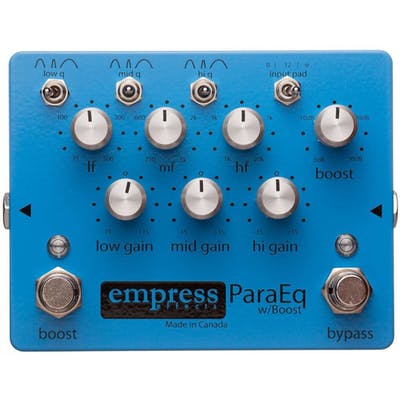
3) Ambient Acoustics Adjustment with equalizer pedal
The third use of the EQ pedal is to correct the acoustics of the environment where you play. It may happen that you change rooms or play in a place that reacts differently to the different frequencies that generates unwanted feedback. Either absorbing or filtering frequencies to a greater or lesser extent. In this way, your setting may require adjustment. Instead of having to tweak the settings on your amp, pedals, or even guitar, you can use the EQ pedal to correct those changes.
As you can see, the equalizer pedal is a very useful and versatile pedal that allows you to get the best out of your Set. Either correcting “surgically” an excess or defect of frequencies through signal shaping, or giving a multiplicity of different tones to your guitar using the “pickup simulator” trick, or also using it as a “customizable booster or overdrive” , or finally, use it as a global audio adjustment tool to correct changes in the gains of the pickups / microphones of the different guitars you use or correct the acoustics of the environment in which you play, eliminating or reducing unwanted feedback.
Where in the audio chain do I place the equalizer pedal?
It depends where you place it in your audio chain, it will influence in different ways. If you place it ahead of the pedal chain, that is, immediately after the guitar, it will influence the tone of the instrument, and its effect on the rest of the components of the chain will be diluted. That’s the right position for when you want to tweak the tone of your guitar, to do the pickup simulator trick, or for the gain booster or overdrive.
You can shape the tone of your pedals such as an overdrive, if you put it after one, you can shape the tone of the overdrive. Also in this place it can be used as a volume booster, as long as your equipment has enough headroom, otherwise it will saturate the preamp stage more.
You could also put it in the effects loop for modeling, coloring the tone of the entire sound chain.
Frequencies and influence on your tone
Below is a brief description of each of the frequency bands of one of the most popular pedals, the Boss GE-7:
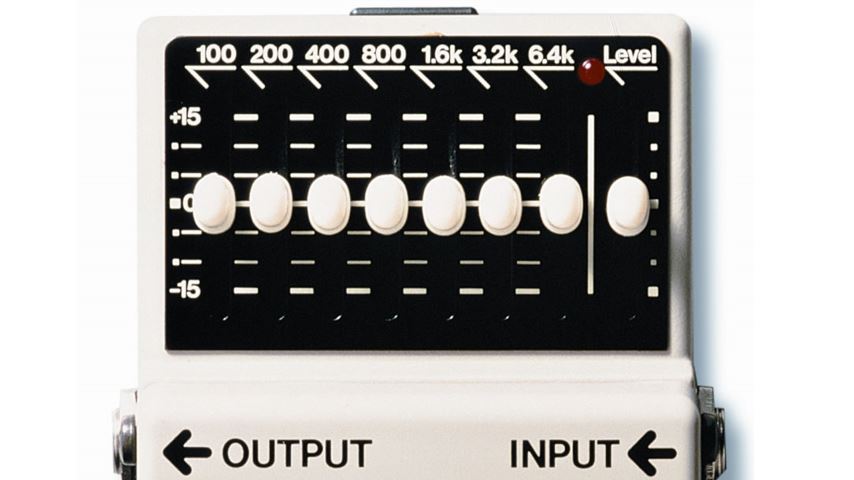
Low or low frequencies
Bass sounds range from 16 Hz to 256 Hz.
- 100 Hz these frequencies known as Low bass since they are the lowest frequencies within the bass frequencies, worth the redundancy. This band of frequencies gives body to the sound and greater tonal amplitude, expanding the range of frequencies covered by our instruments. They are used more on clean sounds where the risk of the audio clipping is low. It is also used to correct muffled audio and / or feedback on acoustic guitars by lowering them.
- 200 Hz called Soft bass are used to add warmth to the tone by adding them or to give clarity by reducing them.
- 400 Hz known as Hard bass, are useful to give our instrument more presence in the rhythmic parts.
Reducing these frequencies serves to eliminate feedback in acoustics.
Medium frequencies
The midtones are those that go from 256 Hz to 2 kHz.
- 800 Hz. The low mids allow us to obtain more aggressive audios, which help cut into the mix. This is one of the fundamental zones of classic overdrives, like Tube Screamer. Playing with these frequencies you can achieve nasal or “hollow” audios.
- 1.6 kHz. These are the upper mids, the ones that stand out the most in the sound mix with other instruments. They enhance the attack on the rope and give presence. This is the band of frequencies that competes with voice -1KHz to 2.5kHz-, with which you have to be careful.
High or high frequencies
These range from 2000Hz or 2.0kHz upwards.
- 3.2 kHz. the “mid” highs are used to achieve definition and clarity in the audio.
- 6.4 kHz. the “high” treble known as High-end is ideal for giving a guitar audio a greater amplitude, making it cover a wider band of frequencies.
Most popular EQ Pedals
Boss GE-7 Equalizer Pedal
We already named it, a classic. Famous guitarists like John Mayer, Alex Trimble, Josh Homme have used it sometime in their career.
DOD FX40B Equalizer Pedal
DODs always have a good choice for whatever it is, and this is no exception. Famous guitarists like Tom Morello from Audioslave have used it at some point in their career.
MXR Ten Band Eq
This is one of the most sophisticated pedals on the market.
MXR 6-Band Graphic EQ
This is the younger brother of the Ten Band Eq, simpler.
Boss EQ-20
Boss presents several options, this is one of the most powerful, with ten bands and memory banks, it shows incredible versatility and precision.
Ibanez GE 9 Graphic Equalizer
The GE9 is an effective five-band equalizer with Level control.
Boss SP-1 Spectrum
This Boss is a very powerful parametric equalizer. We can find Josh Klinghoffer ex Red Hot Chili Peppers and Billy Corgan from The Smashing Pumpkins as some of the well known guitarists who used it.
Earthquaker Devices Tone Job EQ
An extremely practical and easy-to-use 3-band booster and equalizer.
Ibanez GE10 Graphic Equalizer
This Ibanez, very similar to the Boss GE-7 is a classic graphic equalizer. Many established guitarists have used it, including John Mayer and Brendan Benson of The Raconteurs.
Haven’t tried an equalizer pedal yet? What are you waiting for?
Related Articles to keeping in tune your guitar and bass: Guide: The secrets to keeping your guitar and bass in tune.
For more information, head over to Guitar Quarter.
You can share opinions or also chat about this and more with other musicians in our comments section.

